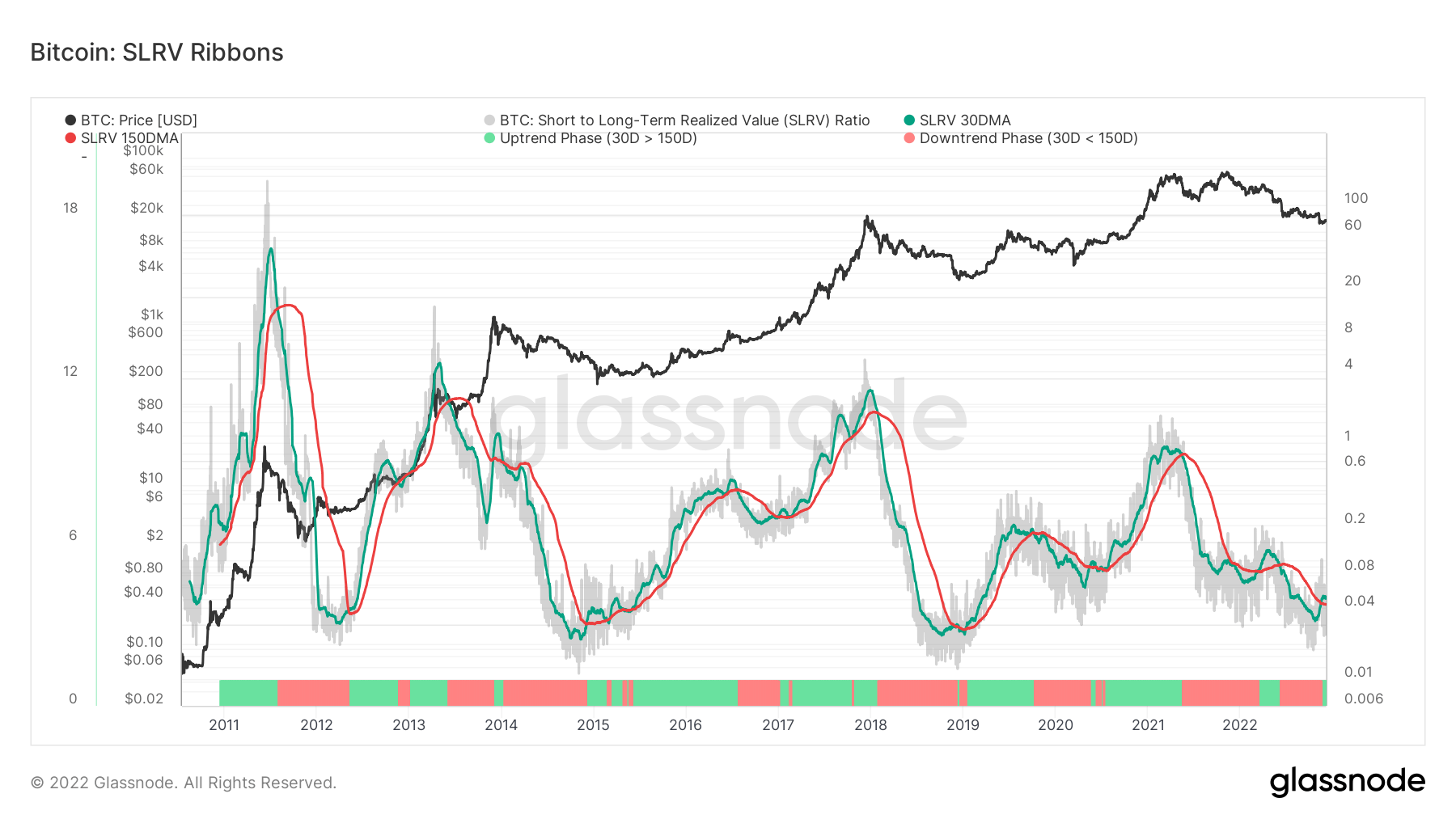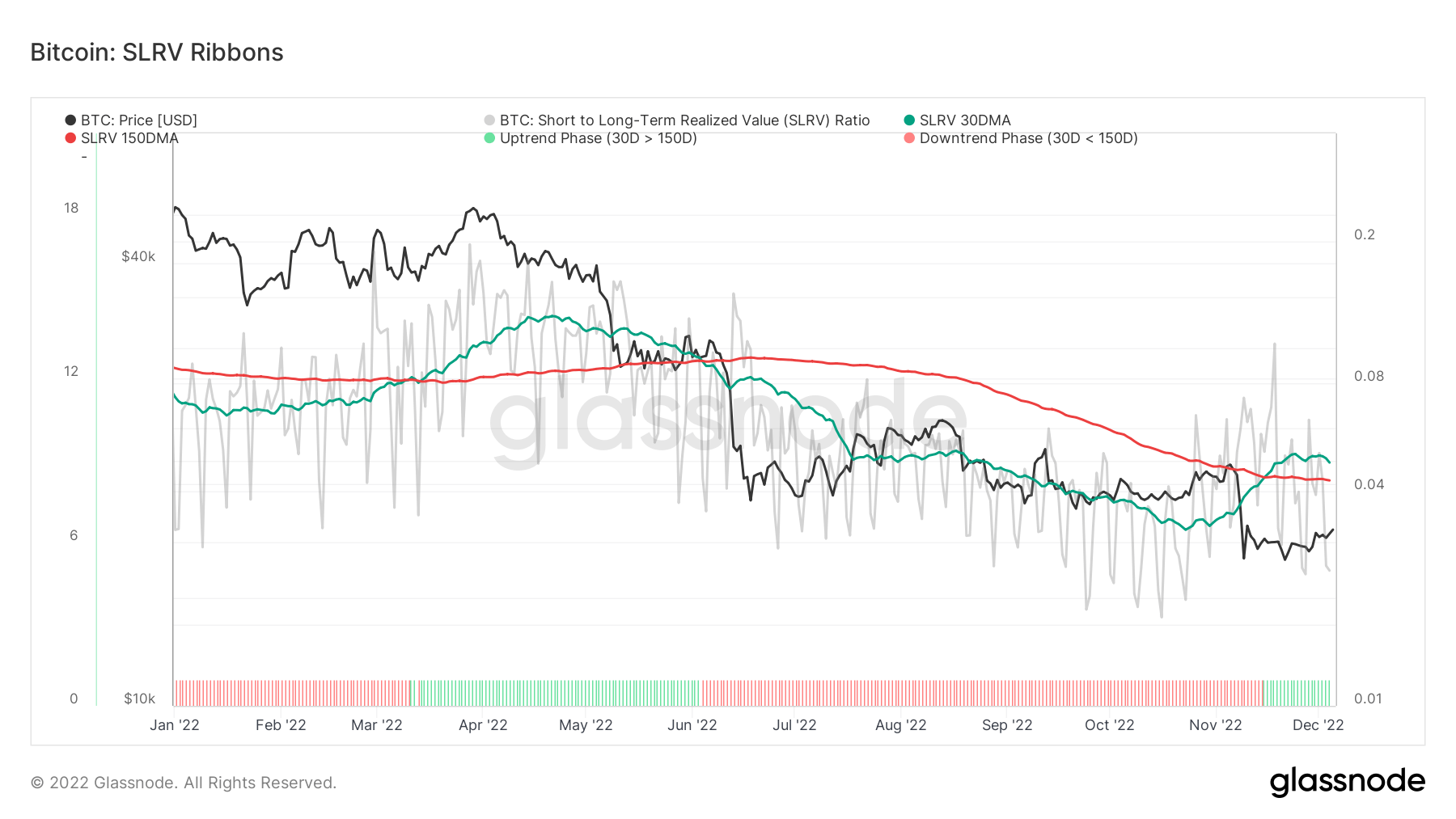Long-term Bitcoin (BTC) holder behavior is considered one of the most determinate factors to assess BTC performance, the market’s top, and the market’s bottom. Long-term holders are defined as addresses that haven’t moved any of their BTC holdings in the last six to 12 months.
The Short-to-Long-term Realized Value (SLRV) Ratio shows the percentage of BTC in existence, the amount moved within the last 24 hours, and divides the percentage last moved within the last six to 12 months.
High values seen on the SLRV Ratio indicator show that short-term BTC holders are becoming more active and engaged on the BTC network. This is indicative of a looming market top and suggests market hype is in full swing. A low SLRV Ratio indicates the absence of short-term holder activity and/or an increasing base of longer-term holders.
By applying SLRV Ribbons to the SLRV Ratio, it is possible to identify positive and negative trends in the market, and historically identify the transitions between risk-on and risk-off allocations to BTC. The SLRV Ribbons in both chart images observe the 30-day and 150-day moving average of the SLRV Ratio.
According to the historical SLRV Ratio chart below, the uptrend phase generally remains below the ratio value of the downtrend 30- and 150-day phase during a bear market. The shift in power can be seen in 2012, 2015, and 2019 — each signaling a distinct change in market sentiment and calling in various bull markets.

According to the SLRV Ratio through the year, BTC last saw a move towards the uptrend phase in March — shortly followed by a downtrend phase in June. This downtrend held an SLRV Ratio of above .08 into Sept but has slowly tapered off in mid-Nov.

As can be seen in the chart above, the SLRV uptrend phase ribbon has just risen above its counterpart as of Dec. Following historical data, this uptrend is expected to continue — following the same pattern displayed in the 2015 and 2019 BTC SLRV Ratio ribbons.
An uptrend towards bullish sentiment was confirmed when BTC was trading at around $16,800 on Nov 15 and only once before that around March — prior to the Luna collapse.
During the FTX collapse, the SLRV Ratio fell as low as 0.019. Reaching this low of a value on the SLRV Ratio is historically associated with the long-term bottoming phase of a bear market and switch in flow towards a bull market.
The post Two metrics show Bitcoin in uptrend, historically a good time for risk-on assets appeared first on CryptoSlate.










